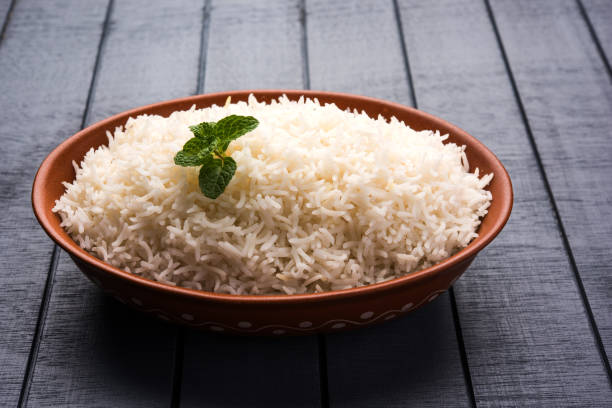For decades, rice has been one of the most widely consumed grains on Earth, serving as a primary energy source for more than half of the global population. Yet in recent years, social media wellness trends and selective research interpretation have sparked concerns: Does rice cause inflammation? Could it weaken bones or contribute to obesity? These questions have fueled confusion, especially among young Americans navigating modern diet culture. Now, orthopaedic specialists and nutrition scientists are pushing back on the claims, emphasizing that rice—when consumed responsibly—plays a valuable role in muscle recovery, metabolic balance, and overall musculoskeletal health.
Orthopaedic surgeon Dr. Manan Vora recently addressed this debate in a video that gained traction among fitness communities. He noted that carbohydrates, particularly those found in rice, restore glycogen levels—the energy reserve muscles rely on post-exercise. Without adequate glycogen, muscle fatigue accelerates, indirectly stressing bones, joints, and supportive connective tissues. His explanation reflects a broader scientific consensus: carbohydrates are not the enemy. Rather, poor dietary patterns, oversized portions, and highly processed foods are often to blame for metabolic imbalance.
Rice as an Efficient Energy Source
Despite the popularity of low-carb lifestyle trends in the United States, nutrition scientists argue that carbohydrates remain the body’s preferred energy substrate. Cells in the brain, heart, and skeletal muscles depend heavily on glucose. When individuals eliminate rice or reduce carbohydrates drastically, the body’s glycogen reserves deplete, resulting in reduced exercise tolerance, mood fluctuation, and impaired recovery. Bones rely on strong, well-recovered muscle tissues to maintain posture and mobility. Simply put, weak muscles lead to stressed bones.
Unlike many processed grains, rice is naturally gluten-free, low in fat, and gentle on the digestive system. It provides vitamins such as B1, B6, magnesium, and iron, which support red blood cell production and energy metabolism. Among cereal grains, rice offers one of the highest rates of net protein utilization, meaning the human body can efficiently absorb and use the proteins it contains. For athletes, growing children, and older adults with weaker digestive capacity, rice can serve as an important dietary anchor.
A review published in Polymers adds scientific clarity, noting that rice proteins deliver essential amino acids without triggering allergic response, particularly for those with gluten sensitivities. This hypoallergenic quality sets rice apart from some popular American grains and wheat-based products.
Muscle Repair, Amino Acids, and Bone Support
Bone health conversations often focus narrowly on calcium, vitamin D, and sunlight exposure. But muscles play an equally critical role. When carbohydrate intake falls too low, muscle cells lack the energy required for recovery. Over time, insufficient muscle repair can lead to subtle microstress on the bone frame, increasing the risk of strain injuries.
The Polymers review highlights four key protein fractions in rice—glutelin, albumin, globulin, and prolamin. Glutelin, in particular, supports tissue maintenance. Meanwhile, albumin provides antioxidant benefits, reducing oxidative stress associated with systemic inflammation and cellular aging. The amino acids leucine, methionine, and cysteine found in rice are instrumental in protein synthesis, collagen formation, and cartilage integrity.
These factors contribute to stronger tendons and joints, ultimately improving skeletal resilience—an important consideration as America grapples with rising sedentary lifestyles and bone density concerns.
Anti-Inflammatory Properties and Metabolic Benefits
Contrary to rumor, rice does not inherently trigger inflammation. Instead, inflammation correlates more consistently with diets high in saturated fats, added sugars, and highly processed ingredients. Rice protein hydrolysates, in fact, have demonstrated potential to reduce pro-inflammatory cytokine production. That means rice may offer subtle anti-inflammatory support when paired with a balanced diet.
There’s more: specific protein fractions in rice can bind bile acids, aiding their removal from the body. This reduces cholesterol levels and supports cardiovascular health—critical in a nation where heart disease remains the leading cause of death. When served alongside lentils, vegetables, or lean proteins, rice delivers slow-releasing carbohydrates that help maintain steady blood sugar levels, reducing spikes associated with cravings and fatigue.
Modern Diets Often Misunderstand Rice
Completely removing rice can create unintended consequences. Nutritionists warn that carbohydrate deprivation may disrupt hormonal balance, influence mood regulation, and impair workout recovery. Americans who switch rapidly to extremely low-carb diets often report headaches, irritability, and digestive discomfort.
Portion control matters. Pairing rice with fiber-rich foods, such as beans or leafy greens, prevents rapid absorption. Opting for whole-grain varieties—like brown, red, or black rice—delivers more micronutrients and improves gut microbiome diversity.
For individuals with gluten sensitivities or irritable digestive conditions, rice remains one of the most well-tolerated grain options. And within immigrant and heritage communities across the U.S., rice remains both culturally significant and nutritionally valuable.
Re-evaluating Rice in American Nutrition Culture
As wellness trends evolve, the pendulum often swings between extremes—low-fat to high-fat, low-carb to high-protein. Emerging research suggests moderation remains key. Rice is not a villain; rather, it is a versatile, easily digestible, nutrient-dense grain that supports metabolism, muscle recovery, tissue growth, and long-term skeletal health.
Traditional diets across Asia, Latin America, and parts of the Middle East have demonstrated for centuries that rice-based meals paired with legumes, fish, and vegetables create balanced nutritional profiles. The U.S. nutrition landscape may benefit from a similar perspective—one that values quality, portion control, and pairing diversity over elimination.
In short, as Dr. Vora suggests, depriving the body of rice can disrupt energy storage and recovery cycles. Instead of fear-based dietary restriction, understanding rice’s biological benefits may help Americans sustain long-term metabolic health.
Disclaimer: This article is for informational purposes only and should not be considered medical advice. Consult a licensed healthcare provider before making significant dietary changes.

